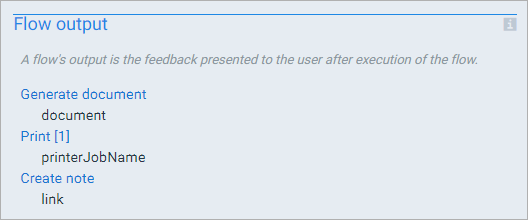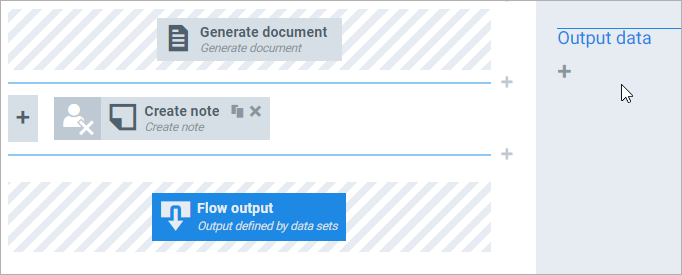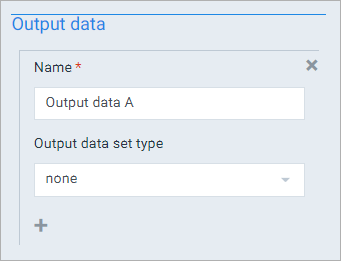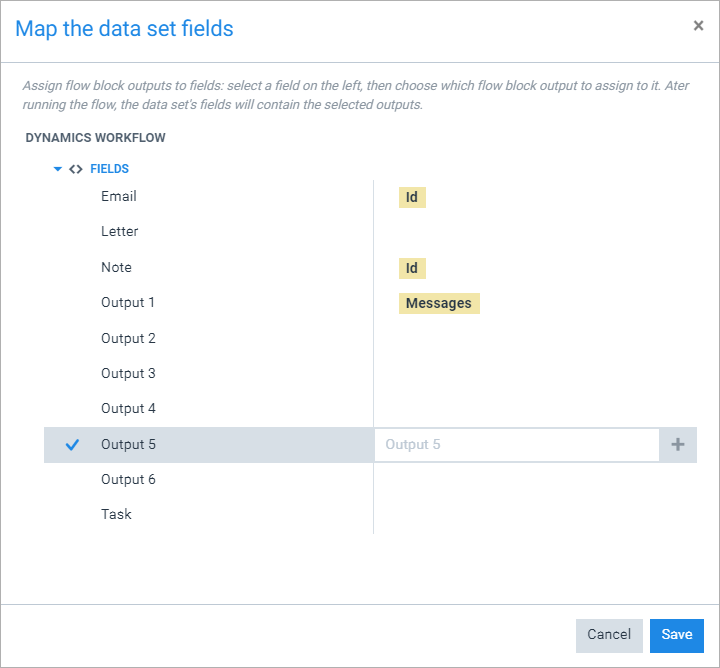Flow Output
The Flow Output step defines how data from a Smart Flow is structured and passed to downstream processes such as Dynamics workflows or external applications.
This topic explains how to structure flow output, configure output data instances, and map field values for reuse in subsequent systems.
Understand the Flow Output Block
Each Smart Flow ends with a Flow Output block. This block consolidates data produced during the flow execution and presents it to the end user or external process.
The Flow Output block performs two functions:
- Displays the output from flow blocks to the user at runtime.
- Enables mapping of values that can be reused in workflows or custom applications.
Configure Output Data
Use output data to transfer structured information from the flow to another system. Each instance of output data is based on a data set, which defines the format and available fields.
To define output data, select the + icon under the Output data section:
For each instance:
- Enter a name for the output instance. This name is referenced in downstream systems.
- Select a data set to structure the output. You can use an existing set or the pre-configured Dynamics workflows set if integrating with Microsoft Dynamics 365.
Map Fields to Output Data
Select Map fields to open the mapping dialog. This interface allows you to connect fields from flow blocks to fields in your selected data set:
In the left column, the structure of the data set is shown. The right column displays mapped outputs from flow blocks.
Example: The ID of a created e-mail is mapped to the Email field, a note ID to Note, and document messages to Output 1. These values are then retrievable in a downstream process such as a automated document genration, see Generating Documents.
To map a value to a field:
-
Select a target field from the left column.
-
Select the + icon to open the block selector.
-
Choose a value from a flow block or enter static text.






